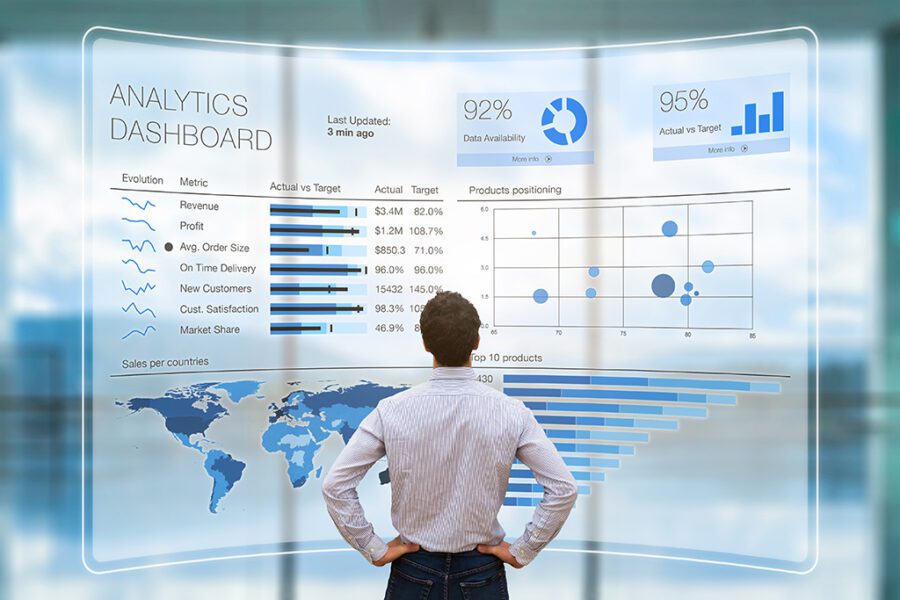In the modern business landscape data is an essential asset that can either make or break an organization. Power BI and Microsoft Fabric are powerful tools that companies utilize to unlock the power of data. These platforms form the backbone of business analytics and when integrated with Azure Data Factory become an unstoppable powerhouse.

Power BI Power BI Your Business Intelligence Companion
Power BI by Microsoft is a powerful business intelligence software that allows organizations to visualize and share their data. It empowers users to create interactive dashboards and reports by transforming data from raw into actionable information.
Whether you’re a small startup or a large enterprise, Power BI adapts to your needs. It connects to multiple data sources, making it easier for users to consolidate data from multiple systems and databases. With its easy drag-and-drop interface even non-technical users will be able to quickly create insightful reports and analyzes.
Power BI supports real-time processing of data, which ensures that you have up-to-date data. The platform offers a variety of graphs and visualizations that allow you to present information in an easy-to-read, engaging way. It is important to communicate and collaborate on reports. This will help improve the decision-making process within your organization and help create a data-driven workplace.
Microsoft Fabric: The Weaving of Data Excellence
Microsoft Fabric is the core framework that connects and orchestrates data across various Microsoft services. The fabric makes data into an ad-hoc entity that is able to be used by companies.
Microsoft Fabric helps businesses maintain the integrity of their data as they manage increasing the volume of data. Microsoft Fabric integrates with a broad range of applications from Azure Data Lake Storage, Azure SQL Data Warehouse to Power BI. The platform’s interconnectivity guarantees data flow and insights coming from a variety of sources.
The flexibility of Microsoft Fabric is evident in its data transformation capabilities. It can be used to sort through data, clean and prepare it for analysis, and also ensure that it conforms to the data governance guidelines of your company. Microsoft Fabric is the framework used to ensure that your data is correct and reliable for analytics.
Azure Data Factory – The Gateway to Data Transformation
Azure Data Factory, another essential component of modern business intelligence is Azure Data Factory. It’s a cloud-based information integration service which allows you create, schedule and manage workflows that are based on data. By orchestrating data movement as well as the transformation of data, Azure Data Factory paves the way to gain valuable insight.
Azure Data Factory offers several strengths, including the ability to connect with various data sources. In the event that your data is stored on-premises or is in the cloud it can be seamlessly integrated and provide you with an all-encompassing view of your data ecosystem. The platform can handle batch processing as well as real-time data streams as well as big data analytics, which makes it suited for a variety of uses.
Azure Data Factory provides a visual interface for the design of data pipes. It’s simple to design and manage data workflows, even when you’re not a coding expert. This lets users stay in control of data integration and self-service data preparation.
Power BI with Microsoft Fabric, Azure Data Factory, and Power BI
When Power BI, Microsoft Fabric, and Azure Data Factory come together, they create a dynamic trio that can completely transform your data analytics activities. This is how they interact:
1. Data Integration: Azure Data Factory can connect to many data sources, and guarantee that your data is readily available. This data integration capability feeds Microsoft Fabric which orchestrates data across various services. This ensures that the data you have properly structured, cleaned, and ready to be analysed in Power BI.
2. Microsoft Fabric’s Data Transformation function is crucial for meeting your analytical requirements. If it’s data-wrangling, cleaning, or even transforming the data, the fabric will ensure that the data is structured for meaningful analysis.
3. Data Visualization: When your data has been perfect and ready to go, Power BI takes over. It allows you to create visually appealing reports and dashboards that make complex data easier to understand. The insights you gain can be shared with your team members to encourage data-driven decisions.
4. Scalability: Azure Data Factory can adapt to growing volume of data. Combining Power BI with Microsoft Fabric will make sure that your data is constant and reliable, even when your business grows.
5. Power BI & Azure Data Factory can provide real-time insight that is essential to agile decision making.
Conclusion
The business intelligence industry is rapidly changing, and to stay competitive, organizations must leverage the power of data. Power BI, Microsoft Fabric and Azure Data Factory offer a powerful combination that can drive your business intelligence efforts to new levels. These three components can help you achieve amazing visualizations to improve data consistency, and speed up processes. Let your data shine with the help of business intelligence.
